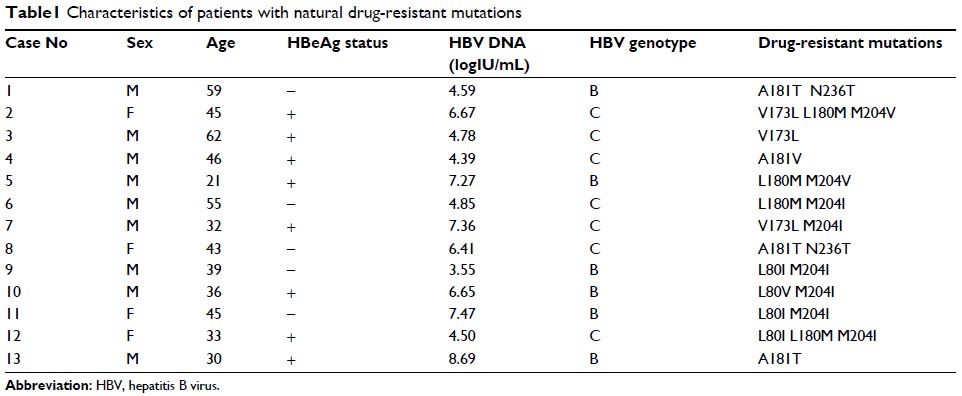9 0 6 7 6
论文已发表
注册即可获取德孚的最新动态
IF 收录期刊
- 2.6 Breast Cancer (Dove Med Press)
- 3.9 Clin Epidemiol
- 3.3 Cancer Manag Res
- 3.9 Infect Drug Resist
- 3.6 Clin Interv Aging
- 4.8 Drug Des Dev Ther
- 2.8 Int J Chronic Obstr
- 8.0 Int J Nanomed
- 2.3 Int J Women's Health
- 3.2 Neuropsych Dis Treat
- 4.0 OncoTargets Ther
- 2.2 Patient Prefer Adher
- 2.8 Ther Clin Risk Manag
- 2.7 J Pain Res
- 3.3 Diabet Metab Synd Ob
- 4.3 Psychol Res Behav Ma
- 3.4 Nat Sci Sleep
- 1.9 Pharmgenomics Pers Med
- 3.5 Risk Manag Healthc Policy
- 4.5 J Inflamm Res
- 2.3 Int J Gen Med
- 4.1 J Hepatocell Carcinoma
- 3.2 J Asthma Allergy
- 2.3 Clin Cosmet Investig Dermatol
- 3.3 J Multidiscip Healthc

湖州地区 HBV 自然而然发生的基因型耐药突变:单中心研究
Authors Qian F, Zou W, Qin J, Li D
Received 25 August 2017
Accepted for publication 6 October 2017
Published 14 December 2017 Volume 2017:10 Pages 507—509
DOI https://doi.org/10.2147/IDR.S149992
Checked for plagiarism Yes
Review by Single-blind
Peer reviewers approved by Dr Akshita Wason
Peer reviewer comments 3
Editor who approved publication: Dr Joachim Wink
China is an area with highly endemic hepatitis B virus (HBV)
infection, with an estimated 93 million HBV carriers, resulting in
approximately 330,000 deaths annually.1 The
predominant HBV genotypes in China are genotype B and C. Currently,
nucleos(t)ide analogs are used for anti-HBV treatment. However, prolonged
antiviral therapy may lead to drug resistance, which is associated with
mutations in the reverse transcriptase region of the HBV genome. Several
studies have shown that drug-resistant mutations existed in treatment-naïve
patients with chronic hepatitis B (CHB). However, the prevalence rates of
natural drug-resistant mutations varied in different reports.2,3 Furthermore, the prevalence and clinical
profile of natural drug-resistant mutations in CHB patients are not quite
clear. Thus, the purpose of this study was to investigate the prevalence and
clinical feature of natural drug-resistant mutations among treatmentnaïve CHB
patients in a tertiary hospital in Huzhou, eastern China.
